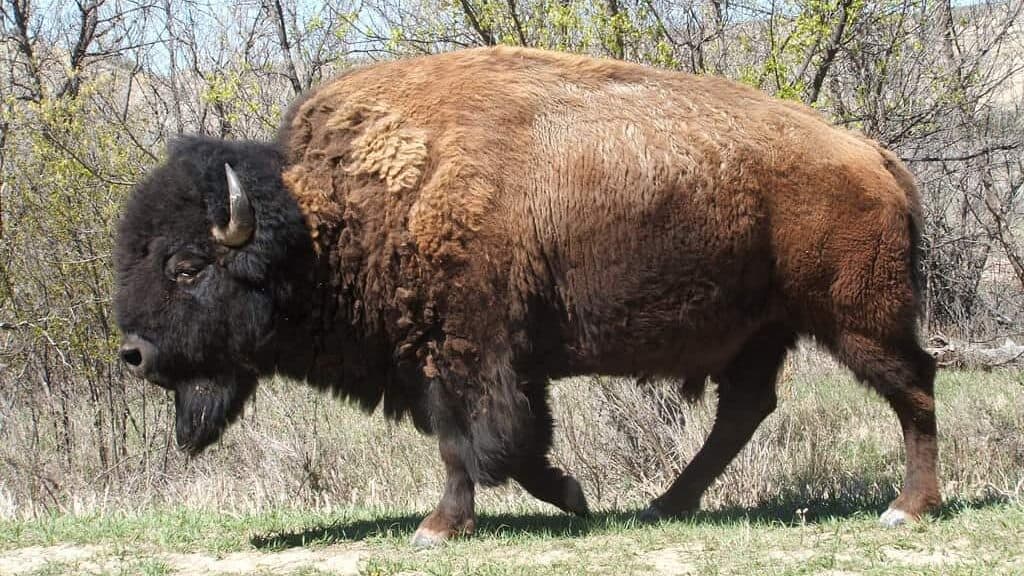On the vast plains of North America, a peculiar scene unfolds regularly among the continent’s largest land mammals. A massive bison, weighing up to 2,000 pounds, suddenly drops to the ground and begins rolling vigorously in the dust, creating clouds of earth that billow around its enormous frame. This behavior, known as dust bathing or wallowing, is one of the most characteristic activities of American bison (Bison bison), yet many observers are left wondering about its purpose.
Dust bathing is not a random act but serves multiple critical functions for these iconic animals. Far from being merely playful or strange behavior, these dust baths represent an important adaptive strategy that has evolved over thousands of years. Understanding why bison roll in dust provides valuable insights into their biology, ecology, and the complex relationship these animals have with their environment.
Parasite Defense System

One of the primary reasons bison engage in dust bathing is to combat external parasites. The Great Plains environment teems with biting insects like mosquitoes, ticks, flies, and other invertebrates that plague these large mammals. Research has shown that during summer months, when biting insect populations surge, bison significantly increase their wallowing behavior. The fine dust particles coat the bison’s hide and fur, creating a natural barrier against these parasites.
When bison roll in dust, the particles adhere to their skin and hair, suffocating attached ticks and other ectoparasites by blocking their breathing pores. The dust also irritates insects, making the bison a less appealing host. Studies conducted in Yellowstone National Park found that bison herds with access to wallowing sites had significantly lower parasite loads than those with limited access, demonstrating the effectiveness of this natural pest control method.
Thermal Regulation in Extreme Climates
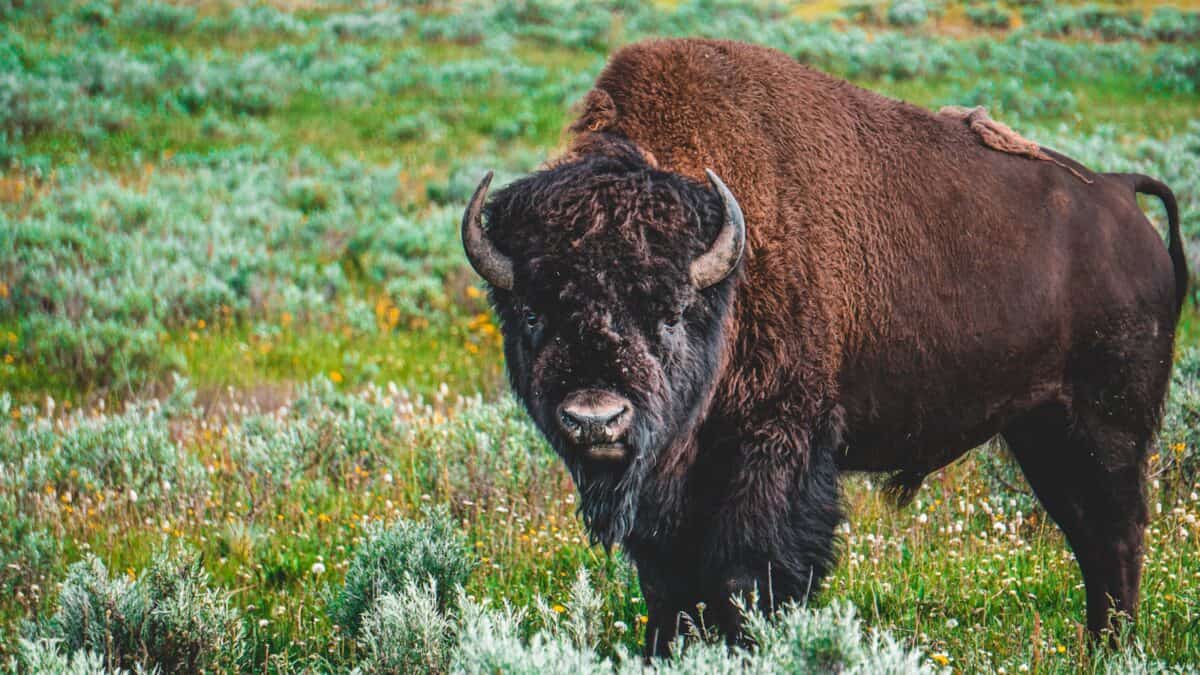
The American Great Plains experience dramatic temperature fluctuations, with summer temperatures often exceeding 100°F (38°C). For bison, with their thick, insulating coats and massive body size, overheating presents a serious risk. Dust bathing plays a crucial role in their thermal regulation strategy. When a bison wallows in dust, particularly in depressions that reach the cooler soil beneath the surface, the animal can effectively lower its body temperature.
The cooling effect occurs through multiple mechanisms. First, the contact with cooler subsurface soil draws heat from the bison’s body. Second, as the dust coats the animal’s hide, it can reflect solar radiation rather than absorbing it. Third, the behavioral process of finding and creating wallows often leads bison to areas with lower ambient temperatures. Research using thermal imaging cameras has documented temperature decreases of up to 4°F in bison immediately following wallowing behavior.
Social Signaling and Communication
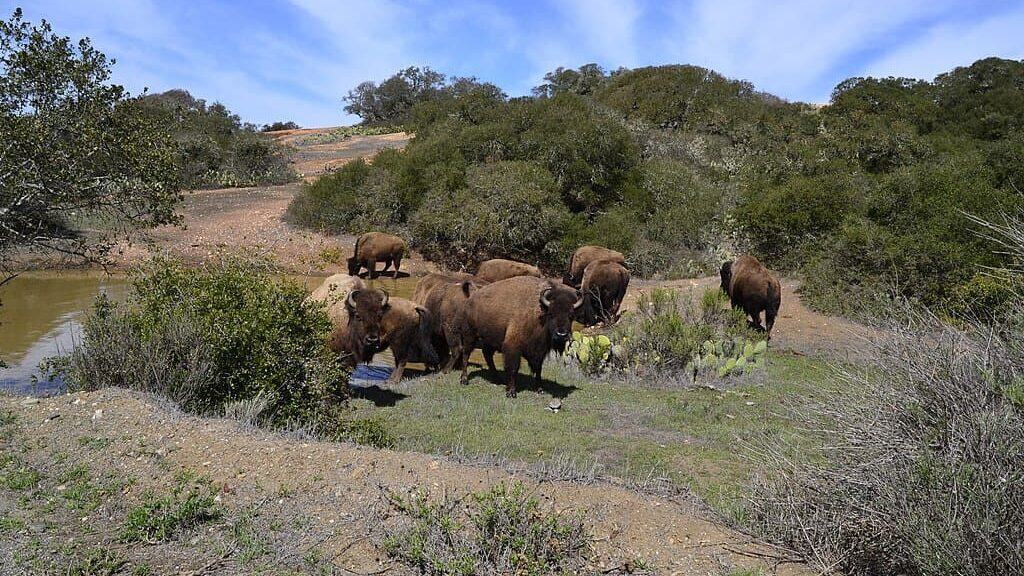
Bison are highly social animals that live in complex herds with established hierarchies. Dust wallowing serves an important communicative function within these social structures. When a bison rolls in dust, it leaves behind not just a physical depression in the earth but also a complex cocktail of scents and pheromones. These chemical signals can communicate information about the animal’s reproductive status, dominance, and individual identity to other herd members.
Male bison, in particular, engage in more frequent and vigorous wallowing during the breeding season (known as the rut). Bulls will often urinate in their wallows before rolling, creating scent-marked territories that advertise their presence to females and warn off competing males. Through careful observation, researchers have noted that other bison will often investigate wallows, sniffing the area and sometimes displaying flehmen responses—a behavior where they curl back their upper lips to better process chemical signals through their vomeronasal organ.
Hair Shedding and Coat Maintenance
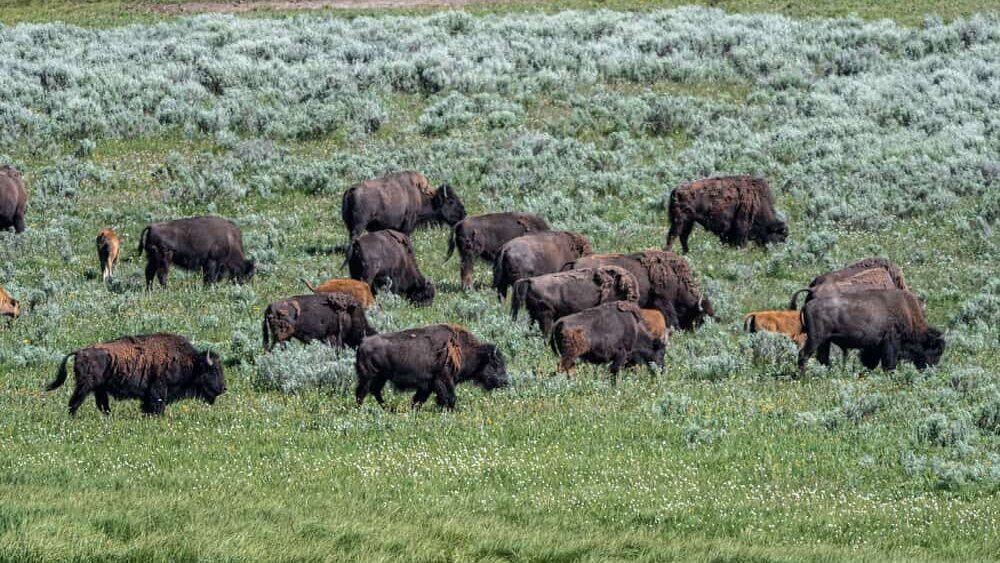
Bison undergo a dramatic seasonal molt, shedding their thick winter coats as temperatures rise in late spring and early summer. This shedding process doesn’t always occur evenly or efficiently without assistance. Dust bathing helps bison remove loose hair and dead skin cells that might otherwise remain trapped in their coats. The abrasive quality of the soil particles, combined with the physical action of rolling, helps to loosen and remove this unwanted material.
Additionally, the dust particles can absorb excess oils from the bison’s skin and fur, helping to maintain coat condition. This is particularly important during rainy periods when mud and moisture might otherwise remain trapped against the skin, potentially leading to skin infections or irritation. Observers of bison herds often notice increased wallowing activity during the peak shedding season, with visible clumps of fur left behind in the wallows after use.
Creation of Ecological Microhabitats

When bison create wallows, they don’t just serve their own needs—they become ecosystem engineers. A single wallow can persist for years or even decades, forming a distinct microhabitat within the prairie ecosystem. These depressions collect rainwater differently than the surrounding terrain, creating ephemeral pools that support unique plant and animal communities. The compact soil of frequently used wallows also creates different growing conditions for plants.
Research in tallgrass prairie ecosystems has identified more than 50 species of plants that specifically thrive in or around bison wallows. Additionally, these wallows provide habitat for amphibians, insects, and small mammals. Prairie birds have been observed using dust from abandoned wallows for their own dust bathing activities. This ecological ripple effect demonstrates how a seemingly simple behavior like dust rolling can have far-reaching impacts on biodiversity and ecosystem function.
Seasonal Variations in Wallowing Behavior

The frequency and intensity of bison dust bathing follow distinct seasonal patterns that reflect changing environmental conditions and biological needs. During summer months, when temperatures are highest and biting insect populations peak, bison may wallow multiple times daily. A study in Badlands National Park documented that wallowing activity increased by 212% from spring to mid-summer. In contrast, winter wallowing is relatively rare, occurring primarily on unusually warm days.
Bison also adjust their wallowing locations seasonally. In spring and early summer, they prefer drier, elevated sites where the ground has warmed more quickly. As summer progresses and these areas become too hot or dry, they shift to lower-lying areas where soil moisture levels remain higher. This strategic adaptation allows bison to optimize the benefits of wallowing throughout the year while adjusting to changing environmental conditions.
Differences Between Males and Females
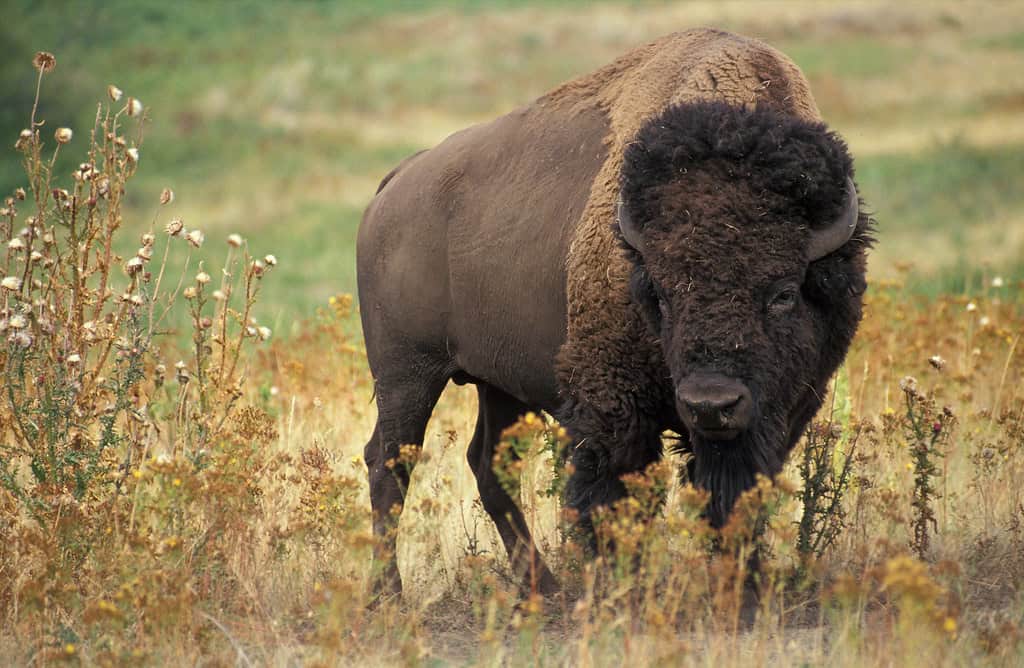
Male and female bison exhibit notable differences in their dust bathing behaviors. Bulls (adult males) generally engage in more frequent and vigorous wallowing than cows (adult females), particularly during the breeding season. Research using GPS tracking collars has shown that mature bulls may visit established wallows up to five times more frequently than females during peak rut. This difference reflects the additional social signaling function that wallowing serves for males during competition for mates.
Females, while still regular dust bathers, tend to wallow more for practical purposes related to parasite defense and thermoregulation. Pregnant or nursing females may reduce wallowing activity to conserve energy. However, observations suggest that female bison often coordinate their wallowing, with multiple cows using the same wallow in succession, potentially as a form of social bonding or to consolidate the beneficial effects of the behavior on the herd as a whole.
Historic Impact on the Landscape

Before European settlement, when an estimated 30-60 million bison roamed North America, their wallowing behavior physically transformed the Great Plains landscape on a massive scale. Historical accounts from early explorers describe “countless” wallows dotting the prairies, some large enough to “hide a horse and rider” from view. These descriptions are supported by aerial surveys of preserved prairie remnants, where the outlines of ancient wallows can still be detected as subtle depressions in the earth.
The cumulative effect of millions of bison creating and maintaining wallows influenced prairie hydrology, soil composition, and plant community structures across the continent. Some ecologists argue that the dramatic reduction of bison populations in the late 19th century not only removed the animals themselves but fundamentally altered ecological processes that had shaped the prairie for thousands of years. Today, conservation efforts in places like the American Prairie Reserve in Montana seek to restore sufficient bison populations to reinstate these landscape-level effects.
Dust Rolling in Other Species
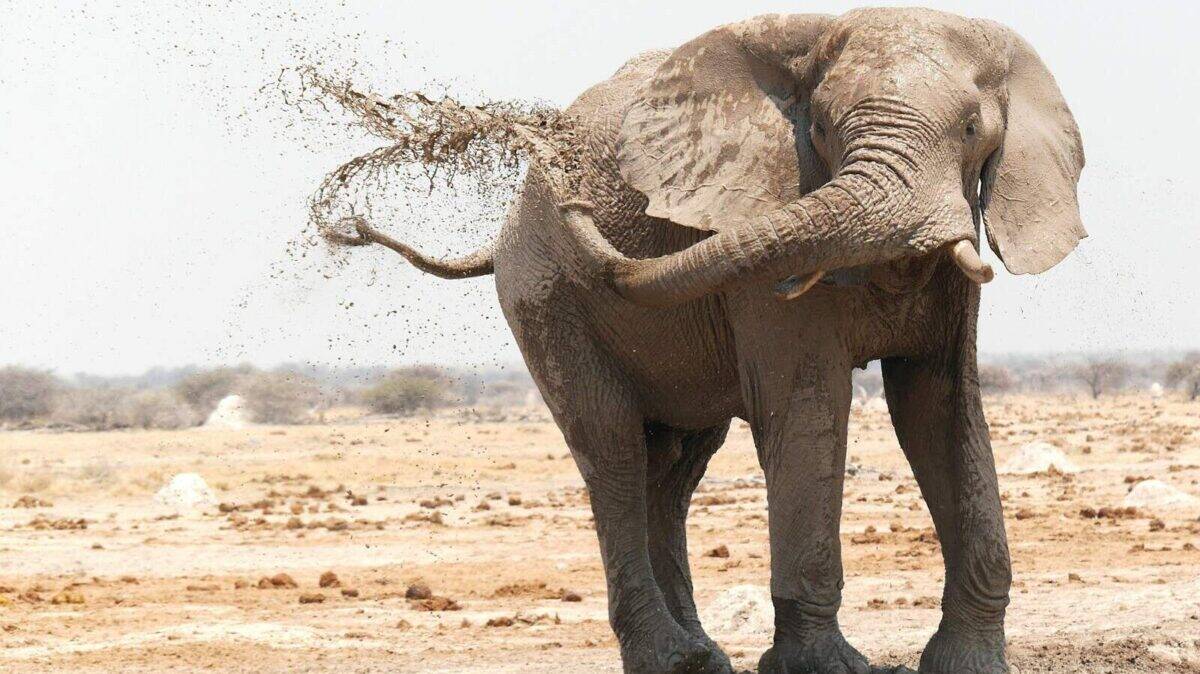
While bison are perhaps the most iconic dust bathers of North America, they’re far from the only species to engage in this behavior. Dust bathing appears across diverse taxonomic groups, suggesting its evolutionary importance. Elephants, rhinoceroses, and various equids (including horses and zebras) regularly engage in dust bathing behaviors similar to bison. Even smaller mammals like chinchillas and degus have evolved to require dust baths for proper coat maintenance.
Birds represent another major group of dust bathers, with species from chickens to sparrows regularly engaging in this behavior. However, the specific techniques and purposes vary between species. While bison primarily roll on their sides and backs, birds typically create shallow depressions with their feet and perform a distinctive wing-fluttering motion to distribute dust through their feathers. This convergent evolution of dust bathing across different animal groups underscores its effectiveness as an adaptive strategy.
Conservation Implications

Understanding bison wallowing behavior has important implications for conservation efforts. As bison have been reintroduced to portions of their historic range, conservationists have recognized that simply establishing populations isn’t enough—these animals need access to appropriate habitat features, including soil types suitable for effective dust bathing. Without these conditions, reintroduced bison may suffer from increased parasite loads, thermal stress, and disrupted social behaviors.
Conservation areas now increasingly incorporate wallowing opportunities into their habitat management plans. In some reintroduction sites where natural soil conditions aren’t ideal for wallowing, managers have experimented with creating artificial wallows or importing appropriate soil types. Long-term monitoring of wallowing behavior also serves as an important indicator of herd health and habitat suitability, with changes in wallowing patterns potentially signaling environmental stressors before they manifest in more serious health issues.
Cultural Significance Among Indigenous Peoples

For many Indigenous peoples of North America, bison wallowing behavior held significant cultural meaning. The Lakota and other Plains tribes incorporated observations of bison dust bathing into their understanding of weather patterns, with increased wallowing activity often interpreted as a sign of approaching storms. This connection wasn’t merely superstition—bison are sensitive to dropping barometric pressure that often precedes rainfall, and may increase wallowing activity in anticipation of conditions that will later make dust bathing impossible.
Beyond weather prediction, wallowing sites themselves were recognized as important locations on the landscape. Archaeological evidence suggests that some hunting strategies leveraged knowledge of preferred wallowing locations to predict bison movements. Additionally, some Indigenous medicinal practices incorporated soil from active wallows, which was believed to carry properties from the powerful bison. These traditional ecological knowledge systems recognized the complexity and significance of wallowing behavior long before scientific studies documented its importance.
The Continuing Mystery of Bison Dust Baths

Despite advances in our understanding of bison behavior, dust bathing continues to present fascinating questions for researchers. While we’ve identified several key functions of this behavior, we’re still discovering nuances in how bison select specific wallowing sites and what factors influence the timing and duration of their dust baths. Recent studies using accelerometers attached to bison have begun to document previously unrecognized patterns in wallowing frequency and intensity throughout the day and across seasons.
As conservation efforts continue to restore bison to more portions of their historic range, we gain new opportunities to observe how this behavior adapts to different environments and conditions. The enduring fascination with bison dust bathing reminds us that even seemingly simple animal behaviors often serve complex ecological purposes. By continuing to study and protect these magnificent animals and their characteristic behaviors, we gain not just scientific knowledge but a deeper appreciation for the intricate relationships that sustain prairie ecosystems.
- Top Volcano Trails Where You Might Spot Rare Wildlife - August 10, 2025
- The Magic Fish That Grants Wishes in European Fairy Tales - August 10, 2025
- Why Bison Roll in Dust—And What It Means - August 10, 2025

